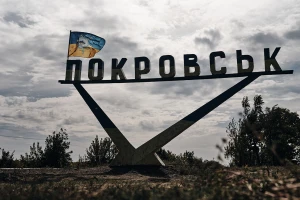
ZNPP accident could affect 40 countries and 1 billion people
If there is not enough power and water at ZNPP, fuel will start to melt, leading to the reactor core melting
The former head of the State Nuclear Regulatory Inspectorate of Ukraine, Hryhorii Plachkov, shared the information with Espreso TV.
"A non-apocalyptic scenario that may occur at ZNPP is the melting of the reactor core. In the worst case scenario, if there is not enough power and water, the fuel will start to melt, and then the reactor core will start to melt," Plachkov explained.
According to him, an accident at ZNPP could affect 40 countries and 1 billion people.
"I believe that the Russians will not go for such a scenario, because ZNPP is located close to the Russian border. According to experts, a beyond-design-basis accident at ZNPP could affect 40 countries and 1 billion people," Plachkov emphasized.
IAEA response to the destruction of Kakhovka HPP
On June 6, Volodymyr Zelenskyy discussed the consequences of the Kakhovka HPP explosion and the risks for the ZNPP with the head of the IAEA and invited him to Ukraine. In response, Grossi stated that he would lead the organization's next mission to the ZNPP after the hydroelectric power plant was blown up by Russia.
Raffael Grossi later expressed concern that in two days, the ZNPP would no longer be able to receive water for cooling from the Kakhovka HPP reservoir. On June 8, the water level in the Kakhovka Reservoir dropped by 2.8 meters to 14.03 meters, and the rate of loss slowed down to 5-7 cm/h. Grossi added that if the water level falls below 12.7 meters, the Zaporizhzhia Nuclear Power Plant will no longer be able to extract water from the reservoir for the site.
On June 9, it was noted that based on preliminary conclusions from IAEA experts, the Zaporizhzhia NPP should be able to pump water from the reservoir to cool the reactors even after the level drops below the critical 12.7 meters. At the same time, Director General Grossi announced an aid program for Ukraine in response to the flooding of the dam in Nova Kakhovka.
On June 12, Grossi expressed concern about the rapid decrease in water levels at Zaporizhzhia TPP following the destruction of the Kakhovka HPP. The IAEA is requesting access to the Zaporizhzhia nuclear power plant to clarify the discrepancy in data regarding the water level at the blown-up Kakhovka dam, used for cooling the ZNPP reactors.
On June 12, IAEA Director General Rafael Grossi was on his way to Ukraine to assess the situation at the temporarily occupied Zaporizhzhia NPP and present an assistance program after the Kakhovka disaster.
- News













































